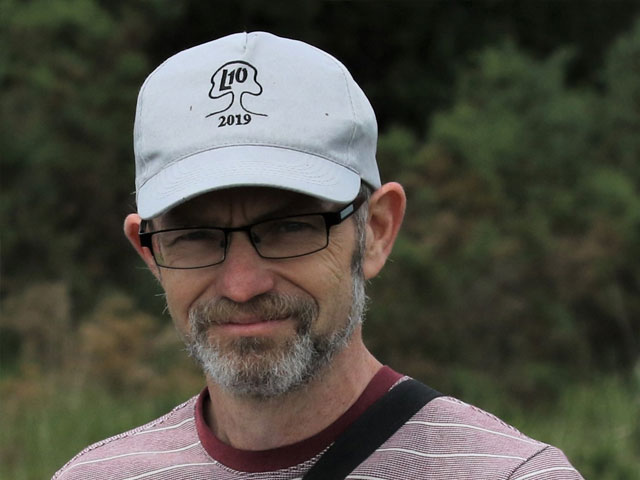Introducing Ian Middlebrook, Butterfly Monitoring Co-ordinator at Butterfly Conservation (BC). Ian has a critical role in supporting and developing the network of transect recorders, co-ordinators and regional staff who contribute to the UK Butterfly Monitoring Scheme (UKBMS), managing the online system and any data and analysis requests.
When did you become part of the Butterfly Conservation team? How has your background or previous jobs helped in this one?
I officially joined Butterfly Conservation in 2007, although I already felt like part of the team, having been based at Manor Yard since 2001. BC were hosting me in my previous role on the Action for Invertebrates project, where I was leading the UK conservation effort on a suite of Biodiversity Action Plan (BAP) priority invertebrates. Most of those species (beetles, flies etc) had very little data, so it was quite a leap from there to working with one of the largest invertebrate datasets in the world! Thankfully, I already had an MSc in Ecological Monitoring, so I had a good understanding of what long-term monitoring was all about.
What is your current role?
As the Butterfly Monitoring Co-ordinator, my main role is to provide technical support and advice for the thousands of volunteers and the incredible branch co-ordinators that make the UKBMS the great success that it is. I am the primary contact for advice in setting up and walking transects, and then play a key role in pulling together all the data each year. I also provide support to volunteers and BC staff in analysing the data and interpreting the results that come out of the scheme.
How has your role evolved over the years, particularly with technological advancements?
Since I started in 2007, the most significant changes have been in the sheer scale of the UKBMS and the development of online data entry. So, along with giving advice on transect methods I also give support and advice to volunteers on using the website.
The number of monitored sites has more than doubled in that time, made possible by the improved efficiency of having the vast majority of data (since 2013), entered directly onto a central database as the season progresses. Before that, all transect data arrived in individual data files at the end of the season – each of which had to be processed separately, checked for data integrity and then imported to a new database each year.
What is the most rewarding part of the job?
For me, the most rewarding part of my job is bridging the gap between the individual effort of volunteers on their local sites, and the overall picture that we get with butterfly trends across the country. It’s very satisfying being able to help the volunteers to get their data into the scheme, and then demonstrating how their data, from a single site, is contributing to the mass of knowledge that we are building up about butterflies across the UK.
Have you got a transect fact for us?
The butterfly monitoring network in the UK has now grown to such an extent that each year our volunteers cover the equivalent distance of walking all the way round the earth’s circumference … twice!


